Navratri: Celebrating Nine Nights of Devi Durga’s Power. Discover the nine forms of Shakti worshipped during this vibrant festival, and tap into the Divine Feminine.
What is Navratri?
Navratri, a festival celebrated in India, is dedicated to Devi Durga, the goddess of power and strength. People celebrate the festival for nine days, symbolizing the nine forms of the goddess, also known as Navdurga. The festival derives its name from two Sanskrit words “Nava” meaning nine and “Ratri” meaning night.
During Navratri, Hindus worship the divine feminine energy of the universe, the mother goddess Durga. They believe she is the driving force behind creation, preservation, and destruction. Devotees seek her blessings, protection, and grace by invoking her.
The festival involves grand celebrations, colorful decorations, and traditional rituals. People pray, fast, and show devotion. In some regions, they celebrate Navratri with Garba and Dandiya, traditional folk dances that celebrate the victory of good over evil.
In this blog, we will explore the significance of Navratri and its various aspects, including the history and mythology behind it and the traditional customs and practices. We aim to provide a comprehensive guide to help you understand and appreciate the essence of this auspicious festival, which holds great cultural and spiritual significance. So, get ready to immerse yourself in the divinity and grandeur of Navratri!
Dates of Celebration in 2023 and 2024
The Navratri Festival, an important Hindu festival, is celebrated across India and other parts of the world with great enthusiasm and devotion. It is a nine-day festival dedicated to the nine divine expressions of Goddess Durga.
In 2023, Chaitra Navratri will be celebrated from 22nd March to 31st March, Ashadha Gupt Navratri will be celebrated from 19th June to 28th June, and Sharada Navratri will be celebrated from 15th October to 24th October. Additionally, Magha Gupt Navratri 2024 will be celebrated from 10th February to 18th February.
The festival is celebrated in unique ways across India, with each region having its own way of celebrating it. In North India, people perform Garba and Dandiya Raas, traditional folk dances, while in South India, people set up golu or kolu, a display of dolls and figurines depicting scenes from mythology.
Navratri is not only significant religiously but also provides an opportunity for socializing and celebrating with family and friends. It is a time to dress up in traditional attire, savor delicious food, and enjoy cultural programs.
Whether you are seeking spiritual enlightenment or looking to experience the cultural diversity of India, Navratri is a festival that you should not miss. So, get ready to immerse yourself in the divinity and grandeur of Navratri!
Significance of The Festival
Navratri is a celebration that lasts for nine nights and holds immense spiritual significance. The festival derives its name from two Sanskrit words that mean “nine nights,” and it is an opportunity for devotees to observe spiritual disciplines such as fasting, meditation, and prayer. This festival is a time for people to rest, recharge, and rejuvenate themselves.
Navratri is associated with the legend of the goddess Durga, who fought the demon Mahishasur for nine days and emerged victorious on the tenth day, known as Vijayadashami. This story symbolizes the need to eradicate all the negative emotions from our lives and to attain inner peace and fulfillment.
During Navratri, people worship the divine feminine energy in the form of Durga, who is also known as Devi or Shakti. Durga, Lakshmi, and Saraswati represent the three aspects of nature, with the first three days of Navratri dedicated to Durga, the next three to Lakshmi, and the last three to Saraswati. Vijayadashami symbolizes the victory over these three aspects of existence.
Apart from the spiritual significance, Navratri is also a time for socializing, dressing up in traditional attire, enjoying cultural programs, and relishing delicious food. The festival is celebrated with great enthusiasm and devotion across India, with each region having its unique way of celebrating it.
In summary, Navratri is a celebration of the divine feminine energy and an opportunity for devotees to rest, recharge and rejuvenate themselves. It is a time to observe spiritual disciplines, eradicate negative emotions, and attain inner peace and fulfillment.
Astrological Significance of Navratri Festival
According to Vedic astrology, each day of Navratri corresponds to one of the nine planets or navagrahas, and each planet has a corresponding deity. Celebrating Navratri with specific rituals and prayers for each planet and deity can help in balancing the energy of that planet and improving its influence in one’s life.
The first day of Navratri is dedicated to Shailaputri, an incarnation of Goddess Parvati, who is associated with the planet Moon. The second day is dedicated to Brahmacharini, the unmarried form of Goddess Parvati, who is associated with the planet Mars. The third day is dedicated to Chandraghanta, an incarnation of Goddess Parvati who is associated with the planet Venus.
The fourth day is dedicated to Kushmanda, another form of Goddess Parvati who is associated with the planet Sun. The fifth day is dedicated to Skandamata, the mother of Lord Skanda (also known as Kartikeya) who is associated with the planet Mercury. The sixth day is dedicated to Katyayani, an incarnation of Goddess Parvati who is associated with the planet Jupiter.
The seventh day is dedicated to Kalaratri, a fierce form of Goddess Durga who is associated with the planet Saturn. The eighth day is dedicated to Mahagauri, another form of Goddess Parvati who is associated with the planet Rahu. The ninth day is dedicated to Siddhidatri, the form of Goddess Parvati who is associated with the planet Ketu.
By performing specific rituals and prayers for each of these deities, people seek to balance the energy of the corresponding planet in their life, leading to positive changes in various aspects of their life, such as health, wealth, relationships, and career.
In addition to the astrological significance, Navratri holds immense spiritual significance as well. It is a time for inner reflection and rejuvenation, as well as an opportunity to connect with the divine feminine energy and seek blessings for a prosperous and fulfilling life. Overall, Navratri is a festival that celebrates both the spiritual and astrological significance of the nine nights.
When is Navratri Celebrated?
Navratri is a festival that occurs four times a year according to Hindu scriptures, with Sharada Navratri and Chaitra Navratri being the most popular ones.
Sharada Navratri is celebrated during the fall equinox, usually in September or October, and is considered the most popular Navratri. It is also known as Maha Navratri or Devi Navratri and is dedicated to the worship of goddess Durga. The festival spans nine nights and ten days and culminates with the celebration of Dussehra or Vijayadashami, which symbolizes the victory of good over evil.
Chaitra Navratri, on the other hand, occurs around the spring equinox, usually in March or April, and is the second most popular Navratri. It is also known as Vasant Navratri and is dedicated to the worship of goddess Shakti. The festival spans nine nights and ten days and culminates with the celebration of Ram Navami, which marks the birth of Lord Rama, an incarnation of Lord Vishnu.
During both Sharada Navratri and Chaitra Navratri, devotees observe fasts and perform various rituals to seek the blessings of the goddess. The festival is celebrated with great fervor and enthusiasm all over India and other parts of the world where Hindu communities reside. The celebrations include traditional dance forms such as Garba and Dandiya, which are performed in groups with colorful attire and traditional music. The festival also involves the decoration of houses and temples with flowers and lights.
Navratri is a significant festival in the Hindu calendar and holds great cultural and spiritual significance. The festival provides an opportunity to connect with the divine and seek blessings for a prosperous and fulfilling life.
Why is it celebrated twice a year?
The length of day and night during the months of March-April and September-October is almost equal, making it an ideal time for celebrating Navratri twice a year. The festival honors Goddess Shakti, who is considered an incarnation of Nature herself, and is celebrated at the onset of seasonal changes.
Navratri is observed twice a year to symbolize the passage of time and to honor the mysterious ways of nature. According to mythology, Lord Ram established the custom of celebrating Navratri before winter, around the fall equinox in the lunar month of Ashvin. He performed a Durga Puja before departing for Lanka and returning victorious, and thus the tradition continues to this day.
Devotees observe Navratri with great enthusiasm and perform various rituals to seek blessings from the goddess. The celebration of Durga Puja, also known as Navdurga Puja, is the biggest event of the year in West Bengal during Shardiya Navratri, the region in India most devoted to Shakti celebrations.
Chaitra Navratri
Chaitra Navratri is celebrated in March or April, around the spring equinox, and concludes on Ram Navami, the birthday of Lord Vishnu’s incarnation. It is the first month of the year as per the Hindu calendar and is primarily celebrated in Uttar Pradesh, Tamil Nadu, Telangana, and Bihar. Devotees visit locations related to Lord Ram’s birth and life to adore the deity during this Navratri.
Ashadha Navratri
Ashadha Navratri or Gupt Navratri occurs in June or July, at the start of the Monsoon season. It is also known as Gayatri Navratra or Shakambhari Navratri. This Navratri was once only known to a small number of adept Sadhaks or Sages during the ancient Vedic period. Today, it is celebrated with great merriment and reverence throughout India, especially in the northern states. It holds particular significance to Tantriks and Sadhaks.
It is of particular significance to Tantriks and Sadhaks who perform ‘Saadhna’ for Goddess Durga to resolve material problems and invoke her for knowledge, wealth, and success. The festival is celebrated with great fervor and devotion across India.
Magha Navratri
Magha Navratri, also known as Magh Gupt Navratri, is celebrated in January or February during the winter season. It is a time when people pray to Goddess Durga with pure hearts and in secret, in hopes of their wishes coming true. The festival is observed for nine days, and if the rites are performed with unshakable conviction, the goddesses may shower their heavenly favors on devotees. Magha Gupt Navratri is particularly popular in Haryana, Punjab, Uttar Pradesh, Himachal Pradesh, Haryana, and Uttarakhand.
The Gupt Navratris are celebrated in secrecy and observed by a Guru and their students due to their extreme sacredness. The Devi Energy is at a much higher level during these times, so rituals and practices are conducted under close supervision with the assistance of spiritual masters.
While Navratri celebrations vary from season to season, all nine days are considered auspicious and enjoyed with enthusiasm across India. Maha Navratri (Sharada Navratri) is believed to be the time when Goddess Durga comes down on earth every year, riding a lion and wielding an arsenal of weapons in her ten hands, symbolizing Shakti or feminine power.
History of Navratri
The ancient Brihat Dharma Purana originated the story of the ten forms of Devi (Dus Mahavidyas). Daksha’s daughter, Sati, married Shiva against her father’s wishes. To spite Shiva, Daksha organized a Yajna and did not invite him. Narad Muni informed Sati of her father’s Yajna, and she requested Shiva’s permission to participate. However, Shiva realized Daksha’s insult and refused to let Sati leave. Her fury became so great that she took on the appearance of Goddess Kali, a form of the Divine Mother.
Sati took on various forms of the Divine Mother to demonstrate her true self to Shiva. The ten forms of Divine Mother halted Shiva in every direction, and the universe trembled beneath the weight of her rage. These forms are known as Das Mahavaidyas.
The nine-night celebration of Navratri honors the divine feminine and focuses on the different aspects of the divine feminine force, or shakti. The festival usually centers around the goddesses Durga, Lakshmi, and Saraswati, and offerings are made to them and their manifestations. Each day of the festival is devoted to one of the nine avatars of Durga, and each day has a color significance.
The Navratri festival celebrates the triumph of good over evil throughout history. In legend, goddess Durga fought the demon Mahishasur, who represents egoism, for nine days and nights until she beheaded him on the last day, known as Vijaya Dashmi or Dussehra. The festival culminates with the celebration of her victory every year through Durga Pooja, performed on the ninth day. The ancient Indian epic Devi Mahatmya describes this event.
Navratri is celebrated with zeal across the country, with different customs and ceremonies in various states. In Northeast India, it is celebrated as Durga Puja, while in the north and west, devotees fast, perform ‘Ramlila,’ and burn effigies of Ravana and his siblings on Dussehra, symbolizing the triumph of good over evil. In Tamil Nadu, it is known as Golu, and in Gujarat, it is famous for its dandiya evenings.
Navratri is a vibrant and colorful celebration, with West Bengal’s Durga Puja being the largest and most significant festival of the year.
Gupt Navratri
There are two sets of Navratris observed during the year: Chaitra Navratri and Sharad Navratri. In addition to these, there are also two Gupt Navratris, also known as the Ashadha and Magha Navratris, which are celebrated with great devotion by some Hindu communities. These are lesser-known Navratris and are observed in secret or ‘gupt,’ hence the name.
Magh Gupt Navratri
Magh Gupt Navratri occurs during the Shukla Paksha of the Magh month and is a lesser-known Navratri festival. The festival begins on February 10th and ends on February 18th, in 2024. It is also known as Gayatri Shishir Navratri, as it falls between the winter months of January and February.
The festival’s name “Gupt” refers to its lack of widespread knowledge, and traditionally, it is worshipped in secrecy. It is believed that during Magh Gupt Navratri, the Devi Consciousness reaches its peak, and tapping into this energy can bring unlimited and powerful benefits.
Despite its less popular status, devotees still celebrate Magh Gupt Navratri with great devotion and reverence. They offer prayers, perform various rituals and ceremonies to honor the divine feminine force during this auspicious time.
Puja Vidhi for Magh Gupt Navratri
Magh Gupt Navratri is a nine-day festival that falls in the Magh month’s Shukla Paksha, starting on February 10th and ending on February 18th, 2024. This festival is also known as Gayatri Shishir Navratri because it occurs between the winter months of January and February. Unlike other Navratri festivals, Magh Gupt Navratri is celebrated in secrecy, silence, and solitude.
During this Navratri, devotees secretly worship the goddess Aadhya Shakti to tap into her unlimitedly powerful energy. The rituals observed during Magh Gupt Navratri are similar to those of Ashadha Gupt Navratri, with the exception that they are held in much more secrecy. The Navratri begins with the placement of a barley-grown Kalash in front of the Aadhya Shakti idol. Another Kalash is placed on top of a raw coconut, and its sthapana is done.
The celebration involves lighting the Aakhand Jyot before Goddess Bhagwati and performing Ganesh Puja. Varun Dev and Vishnu Dev puja are then performed, followed by the puja of Shiva, the Sun, the Moon, and the Nine Planets, and finally the worship of Goddess Bhagwati. Fasting and the recitation of the Devi Path and Durga Saptashati are observed during this Navratri.
Magh Gupt Navratri is a time to fulfill special wishes and attain achievements by performing penance, rituals, and meditation with unbounded devotion to Maa Shakti. It is believed that during the meditation period of this Navratri, all obstacles in life dissolve, and devotees can tap into the Devi Consciousness at its peak to bring endless and powerful benefits.
Ashadha Gupt Navratri
Ashada Gupt Navratri is a nine-day festival that is observed during the waxing phase of the moon in the month of Ashada, which usually falls in June-July. This festival is also known as Gupt Navratri because most of the tantric rituals and sadhanas are performed in secrecy. The festival is mainly celebrated in North India and is believed to be highly auspicious for Shakti and Tantra Sadhanas and accomplishments.
During this Navratri, devotees worship the Dus Mahavidya, which are ten manifestations or aspects of Adi Shakti or Maa Parvati. The ten Mahavidya are Kali, Tara, Tripura Sundari, Bhuvaneshvari, Chinnamasta, Bhairavi, Dhumavati, Bagalamukhi, Matangi, and Kamala. Each of the Mahavidya has its own mantra, legend, and significance, and Shakti Sadhakas worship them for various powers, siddhis, and benefits.
The festival involves the recitation of the Devi Path and Durga Saptashati, fasting, and performing tantric rituals to achieve various accomplishments. The festival is considered the best time to seek the blessings of the Goddess and to gain spiritual knowledge and wisdom.
The Ashada Gupt Navratri is celebrated with great devotion and reverence by those who observe it. The festival holds significant importance in the Hindu culture, and it is believed that worshipping the Dus Mahavidya during this time can bring immense benefits and fulfillment of desires. It is a time for spiritual growth, self-discovery, and seeking blessings from the divine feminine force.
Goddesses Worshipped During Ashadha and Magh Gupt Navratri
The Gupt Navratris feature the worship of the Dus Mahavidyas, with “Das” meaning ten, “Maha” meaning great, and “Vidya” meaning wisdom or knowledge. These ten forms are considered transcendental manifestations of the goddess Parvati, also known as Adi Parashakti. Each Mahavidya has its own unique history, attributes, and mantras, and collectively they represent the tantric manifestations of Devi Shakti.
The ten Mahavidyas are Kali, Tara, Tripura Sundari (or Shodasi-Sri Vidya), Bhuvaneshvari, Chinnamasta, Bhairavi, Dhumavati, Bagalamukhi, Matangi, and Kamala. Successful worship of these deities is believed to grant devotees numerous blessings and boons.
How to Celebrate Navratri?

Navratri is a significant Hindu festival dedicated to the divine feminine power in the universe, Goddess Durga. The festival is celebrated for nine days and is a time of great joy and festivity in India.
During this period, devotees engage in various rituals and practices to honor the goddess and seek her blessings. Chanting of holy hymns, dancing to the beats of garba and dandiya, and attending Jagrans are some of the popular ways that devotees express their devotion to their favorite goddess.
It is crucial for the younger generation to understand the significance of Navratri and its rituals to keep the rich Indian culture alive for generations to come. By passing on the knowledge of the festival’s meaning and practices, they ensure that the vibrant and colorful celebration of Navratri continues to be an essential part of Indian culture.
Ghatasthapana
Ghatasthapana is an essential Navratri ritual that marks the beginning of the nine-day celebration. It is a sacred act of invoking Goddess Shakti, and performing it at the wrong time or in a wrong way can lead to negative consequences. It is advisable to follow specific rules and guidelines when performing Ghatasthapana.
The most auspicious or Shubh time to perform Ghatasthapana is during the first one-third of the day while Pratipada is in effect. It is also possible to perform it during the Abhijit Muhurta if the auspicious time is not available. However, it is not recommended to perform Ghatasthapana during Nakshatra Chitra and Vaidhriti Yoga, even though it is not prohibited.
It is also important to avoid performing Ghatasthapana on Amavasya and at night. The act of Ghatasthapana is also known as Kalash Sthapana or Kalashsthapana, and it is crucial to perform it before Hindu noon time while Pratipada is in effect.
Understanding the proper way of performing Ghatasthapana is essential to ensure that one can reap the maximum spiritual benefits of Navratri and avoid any negative consequences.
Growing Khetri
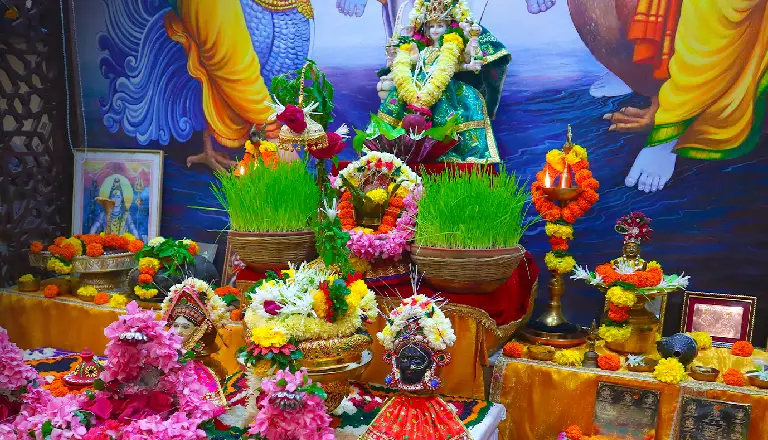
Growing Khetri or barley seeds during Navratri is a tradition that symbolizes growth, prosperity, and abundance. The practice of growing barley seeds is believed to have originated in ancient India, where farmers used to sow barley seeds in their fields to invoke the blessings of the Goddess for a bountiful harvest.
Today, this tradition is still prevalent in many parts of India, where families and communities participate in the ritual of growing Khetri during Navratri. The barley seeds are nurtured and cared for during the nine-day period, and it is believed that the growth of the seeds represents the growth of wealth, happiness, and prosperity in the family.
On the last day of Navratri, the Khetri is taken to a nearby river or stream and immersed in the water, which is believed to release the energy and blessings of the Goddess into the environment. Alternatively, the Khetri can also be placed under a Peepal tree, which is considered a sacred tree in Hinduism.
The tradition of growing Khetri during Navratri is not only a way to seek the blessings of the Goddess but also a way to connect with nature and celebrate the abundance of life. It is a beautiful way to honor the cycle of growth and renewal that is an essential part of the Hindu philosophy.
Fasting During Navratri
Navratri, the festival of the goddess Durga, is celebrated with great devotion and fasting is a significant aspect of this nine-day festival. The purpose of fasting is not to appease the deity, but rather to cleanse the mind, body, and spirit. According to Ayurveda, fasting allows the abdomen to be empty, which generates more jatharagni or digestive fire, eliminating toxins from the body. This results in a calm mind, increased focus, and improved mental strength.
Austere/Full Fasting
During an austere fast, a person does not eat anything for the entire festival, which lasts for nine days. They may only consume water during this period. The fast is broken on the tenth day after performing a puja (worship) and offering food to young girls (Kanya Pujan).
Partial Fasting
In a partial fast, one can consume permitted foods such as fruits, sabudana, rajgira, kutta kaatta, dairy, and nuts during the day, and have a one-time meal at night. It is important to keep drinking water during the fast, and one can also consume coconut water, buttermilk, lemon juice, and other juices to avoid dehydration and weakness.
It is recommended to offer whatever food is prepared to the deities and then share it as Prasadam. Keeping the home clean at all times is important, as a clean home is believed to invite the Goddess. One should avoid consumption of alcohol, drugs, eggs, non-vegetarian food, onions, and garlic during this period.
When can one break the fast?
Navratri is not only a time for celebration and festivities but also a period of spiritual significance, observed by families all over northern India. The seven-day fast, known as Navratri Parana, is a tradition that is followed by many. Some may choose to fast only on certain days, while others observe it for the entire festival.
Breaking the fast after performing Kanya Puja is a common practice, but it is important to note that there is no need to seek out the Navratri Parana Muhurat if you follow this tradition. Fasting during Navratri is believed to bring spiritual purity and blessings from Goddess Durga, and many people also choose to donate food or money to the needy during this time, as a form of charity and seeking the blessings of the goddess.
Nav Kanya Pujan

During Navratri, families invite nine young girls below the age of 13 to their homes and worship them as embodiments of the nine goddesses or nine manifestations of Goddess Shakti. This age-old tradition, known as Nav Kanya Puja, is highly regarded for its ability to please Goddess Durga. The belief behind this tradition is that the feminine gender embodies the primordial energy of creation and these girls represent the very first force that inspired the creation of the universe and the gods, making them deserving of utmost respect and admiration.
During Kanya Puja, the family washes the girls’ feet, ties a red mauli on their hands, and applies a tilak on their forehead. Then, they worship and offer prasadam, including puri, dry black chana, and halwa. Some families also invite and worship a boy of the same age as the form of Bhairava (Shiva). The coconut kept at the altar is cracked open and shared as prasadam among the girls.
This ceremony, also known as Maha Ashtami Kumari Puja, holds great significance in the Navratri festivities. Performing Kanya Puja is believed to help one gain the blessings of Goddess Durga and acknowledge the feminine power bestowed in the female child. Additionally, all the offerings made to the goddess during the nine days are offered to the young girls, making this ceremony an important aspect of Navratri celebration.
Navratri Celebrations Around The World
People all over the world celebrate Navratri with great enthusiasm and devotion. During this festival, they worship Goddess Durga and seek her blessings. Navratri is not just limited to India, but also celebrated in other countries like Nepal, Bangladesh, and Sri Lanka, amongst others.
In Nepal, Navratri is celebrated as Dashain, which is one of the most important festivals in the country. The festival spans over fifteen days and is celebrated with great joy and excitement. People clean their homes, wear new clothes, and visit temples to offer prayers to Goddess Durga.
In Bangladesh, Navratri is celebrated as Durga Puja, which is a major festival in the country. People install beautifully decorated pandals (temporary structures) in the streets and offer prayers to Goddess Durga. The festival is marked with cultural programs, feasts, and fairs.
In Sri Lanka, Navratri is celebrated as Navarathri, and it is a time for people to engage in religious activities and seek blessings from the divine. People fast, perform poojas (worship), and offer prayers to the Goddess.
The festival has gained popularity in Australia over the years, especially among the Indian diaspora. The celebrations are similar to those in India, with people observing fasts, performing pujas, and participating in cultural events.
In the United States, Navratri is celebrated with great enthusiasm, especially in cities with a large Indian population such as New York, Chicago, and Los Angeles. Many temples and community organizations organize Garba and Dandiya Raas, which are traditional folk dances of Gujarat, India. People dress up in traditional attire and dance to the beats of the dhol (a traditional drum) and other musical instruments.
In the United Kingdom, Navratri is also celebrated with much fervor, especially in cities such as London and Birmingham. The festivities are similar to those in India, with people participating in Garba and Dandiya Raas, performing pujas, and feasting on traditional foods.
In Canada, Navratri is celebrated with much gusto in cities such as Toronto, Vancouver, and Montreal. The celebrations include Garba and Dandiya Raas, traditional pujas, and cultural events.
In Southeast Asia, Navratri is celebrated in countries such as Singapore and Malaysia, where the Indian diaspora is sizable. The celebrations include pujas, Garba, and Dandiya Raas, as well as other cultural events such as fashion shows and music concerts.
In summary, Navratri is celebrated with much fervor and enthusiasm around the world, especially in countries with a sizable Indian population. The celebrations include traditional pujas, fasting, and cultural events such as Garba and Dandiya Raas.
Rudraksha you should wear during Navratri
Nine Mukhi Rudraksha
The Nine Mukhi Rudraksha is highly recommended to be worn during Navratri, as it is believed to be blessed by Devi Durga herself. This Rudraksha is associated with the nine forms of Durga and is believed to bring peace, prosperity, and success to the wearer. It is also believed to help overcome obstacles, provide protection from negative energies, and enhance spiritual growth.
Eighteen Mukhi Rudraksha
The Eighteen Mukhi Rudraksha is believed to be blessed by Devi Bhumi, the earth goddess, who is revered as the mother of all creation. Wearing the Eighteen Mukhi Rudraksha is believed to bestow abundance, prosperity, and good fortune upon the wearer. It is also believed to enhance intuition, promote spiritual growth, and protect the wearer from negative energies. This Rudraksha is also said to help remove obstacles and bring success in all endeavors.










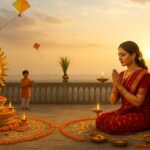

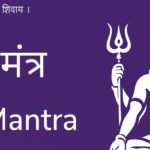
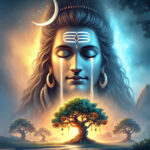
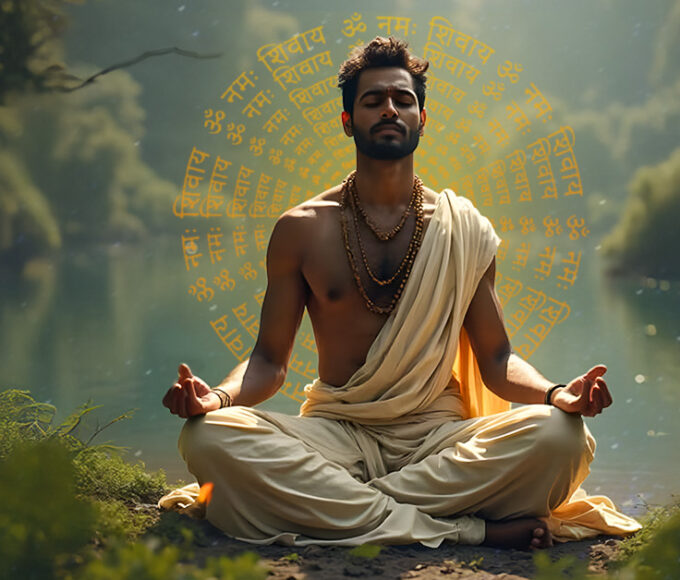
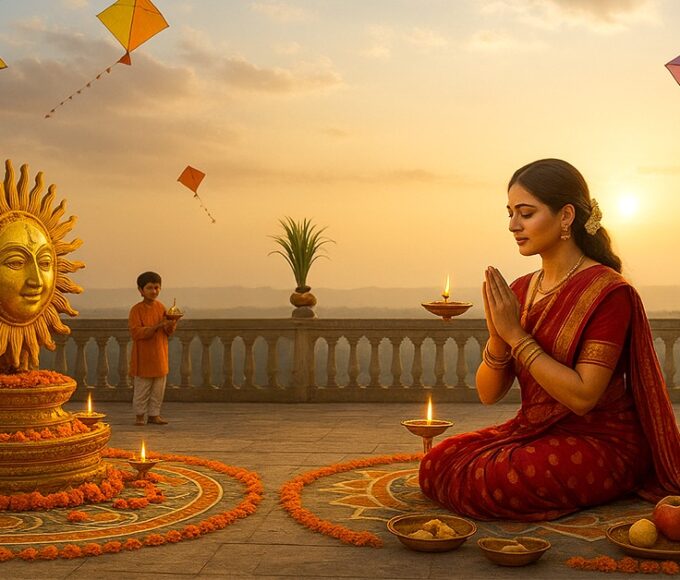

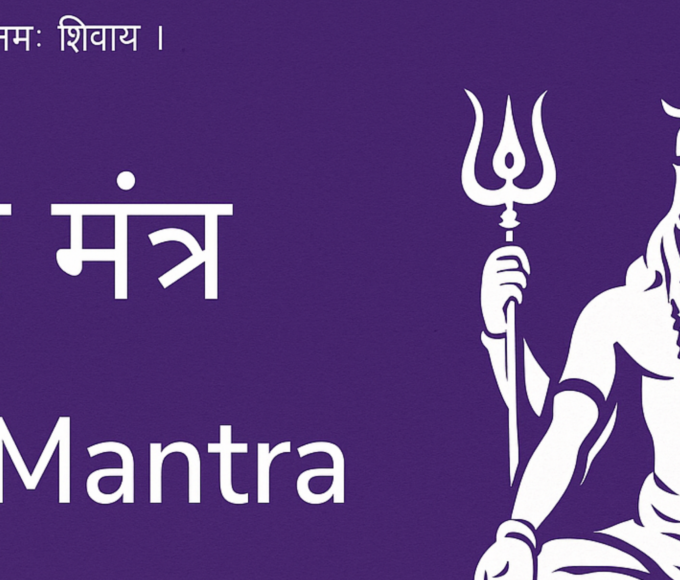
Leave a comment